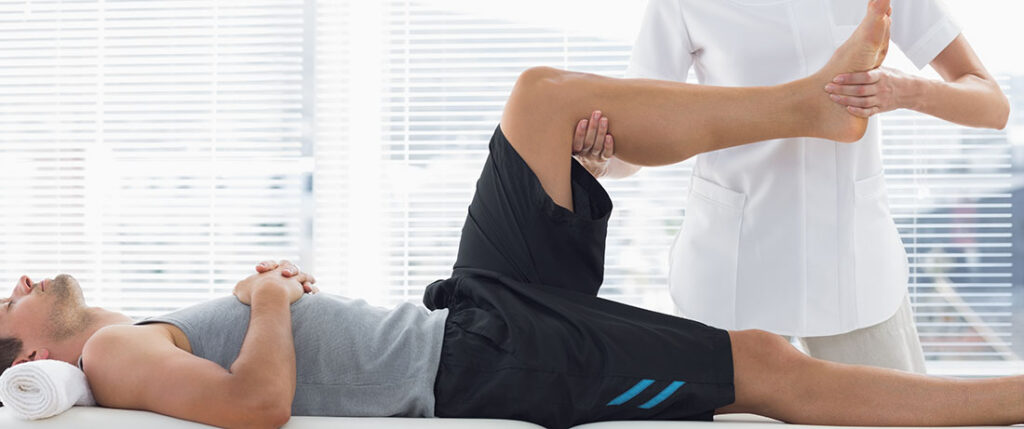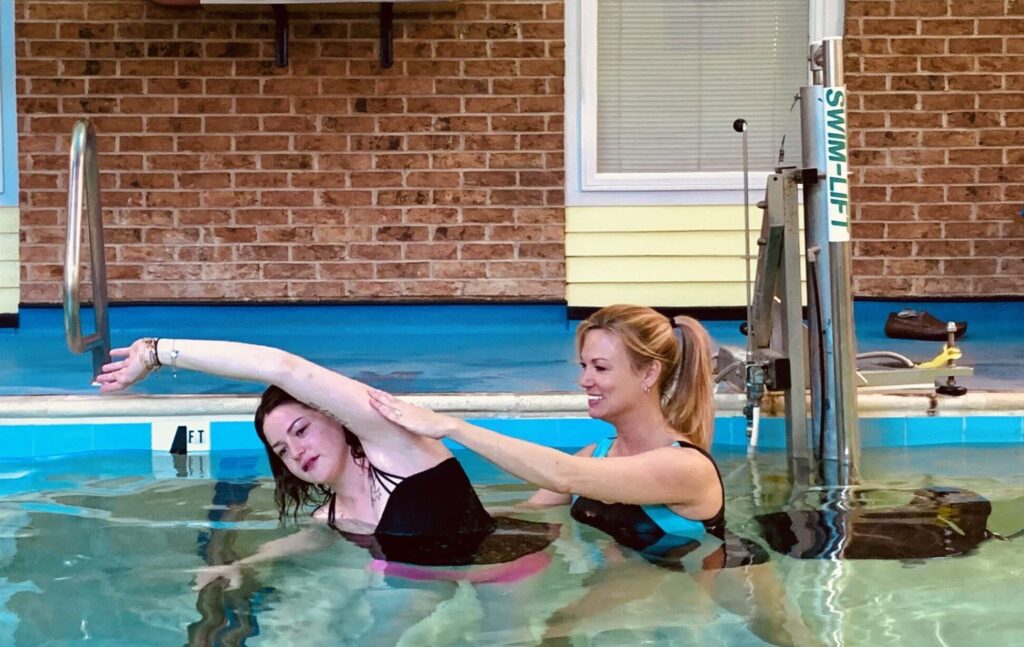
Make a Plan to Return to Running

By Claire Nelson, PT, DPT, Aquacare – Berlin
Lacing up the sneakers and heading out to the trails for a run may be tempting, however if you have not been running in some time or if you are still recuperating from an injury, it is best to make a plan before impulsively jumping back into running.
Returning to the sport requires diligent effort, especially for novice runners or those recovering from an injury. To begin your running journey on the right foot, it is best to start with non-running activities.
Rehabilitating the body for running is a demanding process. With each stride, an average runner’s foot touches the ground for a mere 300 milliseconds, resulting in approximately 1,400 steps per mile. Within this fleeting moment, the body experiences ground reaction forces that are equivalent to 2-3 times your weight.
This means an immense amount of force is applied to the body within an incredibly short timeframe. Researchers have examined specific muscle groups to understand the impact compared to walking. The key leg muscles are required to withstand a load ranging from 1.5 to 8 times the runner’s body weight with each step! Notably, the calves, quadriceps, and glutes bear the greatest burden during this process.
Therefore, before hitting the trails, it is crucial to build a solid foundation by focusing on strength training and flexibility exercises. Here are some non-running activities that can prepare your body for trail running:
- Strength Training: Incorporate exercises that target the key muscles used in trail running, such as the calves, quadriceps, glutes, and core. Squats, lunges, step-ups, and calf raises are excellent options. Start with bodyweight exercises and gradually increase the resistance as you gain strength.
- Balance and Stability Work: Trail running requires stability and proprioception. Incorporate balance exercises like single-leg squats or standing on one leg, as well as stability exercises with a wobble board or stability ball. These exercises will help improve your body’s ability to navigate uneven terrain.
- Core Work: A strong core is essential for maintaining proper form and stability while running. Include exercises like planks, Russian twists, and dead bugs to strengthen your abdominal and back muscles.
- Flexibility and Mobility Work: Flexibility and mobility are crucial for injury prevention and efficient running mechanics. Regularly stretch your calf muscles, quadriceps, hamstrings, and hip flexors. Foam rolling or using a massage ball can also help release tension and improve mobility.
- Cross-Training: Engage in low-impact activities like cycling, swimming, or yoga to build cardiovascular fitness and strengthen different muscle groups. Cross-training can also provide a break from the repetitive impact of running.
As you progress with these non-running activities, gradually introduce running into your routine. Start with short, easy runs on flat surfaces to allow your body to adapt to the demands of running. Gradually increase your mileage and intensity while listening to your body for any signs of pain or discomfort.
Remember, patience and consistency are key during the return to running. By taking the time to properly prepare your body beforehand, you will be better equipped to handle the challenges of trail running and reduce the risk of future injury.
Claire Nelson, PT, DPT, is a physical therapist now accepting new patients at Aquacare – Berlin. Claire specializes in orthopedic rehabilitation and musculoskeletal ailments. To make an appointment with Claire, call 443-513-3910 or schedule online at www.aquacarephysicaltherapy.com.



































